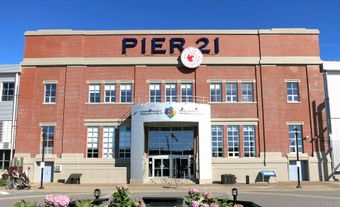Present day Hungary is a landlocked country in central Europe. It is bordered by Slovakia, Austria, Slovenia, Croatia, Serbia, Romania and Ukraine. Hungarian immigrants to the United States began migrating to Canada in the 1880s. The 2016 census reported 348, 085 Canadians of Hungarian origin (83, 400 single and 264, 685 multiple responses).
Origins
Prior to 1914, Hungarians came to Canada from Austria-Hungary, along with Slovaks, Croatians, Germans and others. Since the end of the First World War (WWI) Hungarians emigrated from Hungary, or from other countries with substantial Hungarian minorities, such as Czechoslovakia, Romania or Yugoslavia.
Uneven economic development, lack of agrarian reform, a nationality problem and other factors caused hundreds of thousands of Hungarians to emigrate. After the collapse of the Austro-Hungarian Empire in 1918, Hungary was declared an independent republic. The resulting economic and social malaise drove still more Hungarians to emigrate, while Hungarians who had been transferred to neighbouring states often chose immigration to Canada over life in a hostile political environment. WWII and the imposition of a communist dictatorship forced more Hungarians into exile.
Migration and Settlement
Hungarians came to Canada in 4 major waves. In the period before 1914 about 8000 immigrated; from 1925 to 1930 about 26 000; between 1948 and 1952 some 12 000 postwar displaced persons arrived; and between 1956 and 1957 about 37 000 Hungarian refugees came to Canada after the collapse of the 1956 uprising against Soviet authority.

Most of the pre-1914 settlers were peasants, and many of that group were migrating to Canada from the industrial slums of the US. The interwar arrivals were a somewhat more mixed lot socially, while many of immigrants who arrived after the Second World War (WWII) were from Hungary's dispossessed middle and upper classes. Young adult males predominated in all but the last wave of immigrants.
The first groups of Hungarian immigrants settled mainly on prairie homesteads, but later immigrants established themselves in towns and cities. Whether in rural or urban areas they usually congregated in their own residential groups.
Did you know? The town of Esterhazy, Saskatchewan is reportedly named after Paul Otto d'Esterhazy (christened Johannes Packh). In the late 19th century, he helped 35 Magyar and Slovak families in their migration from the United States to settle in what would become the provinces of Manitoba and Saskatchewan (see North-West Territories: 1870 – 1905). Prior to 1914, Saskatchewan was sometimes called "Little Hungary".
From the 1920s onwards, more Hungarians settled in cities, especially in central Canada. The Great Depression interrupted these trends, but the shift to the cities, and especially to southern Ontario, resumed after WWII.
Economic Life
Most of the early Hungarian immigrants worked as homesteaders, miners, navvies and loggers. The post-1945 immigrants tended to be more skilled and better educated. In times of prosperity most Hungarians did well, in times of recession they were particularly hard hit. During the Depression most of them lost their jobs, farms or businesses.
Social and Cultural Life
Most Hungarians are Roman Catholic. Others belong to various Protestant faiths; still others are Jewish or Eastern Rite Catholics. Many of their churches double as social and cultural centres and provide instruction in the Hungarian language for children. In the 2016 census 64, 335 people in Canada reported Hungarian as their mother tongue (first language learned).
To smooth the effects of social isolation and to reduce economic instability, Hungarians have maintained various types of organizations since the establishment of their first settlements. Today, many of these clubs and churches are members of the Hungarian Canadian Federation, the national umbrella organization of Hungarians in Canada. Among the local, regional or professional organizations mention might be made of the Széchenyi Society of Calgary, Alberta which had been instrumental in the establishment of a permanently endowed Hungarian studies program at the University of Toronto, the first of the so-called "ethnic studies chairs" in Canada.
In Toronto, the Hungarian Helicon Society has been active in cultural and social affairs since the 1950s. Many towns and cities across the country are home to Hungarian Cultural Centres. In recent years an increasingly important role has been played in the community life of major centres of Hungarian life in the country, such as Toronto, of Hungarian refugees from the Transylvanian districts of Rumania.
Hungarians began publishing Hungarian-language newspapers before 1914. Toronto was long the centre of Hungarian publishing activity in Canada; publications included Kanadai Magyarsàg (Canadian Hungarians), Magyar Élet (Hungarian Life) and many more specialized papers. Menorah Egyenlöség was the largest Hungarian-language Jewish newspaper in North America.

 Share on Facebook
Share on Facebook Share on X
Share on X Share by Email
Share by Email Share on Google Classroom
Share on Google Classroom

